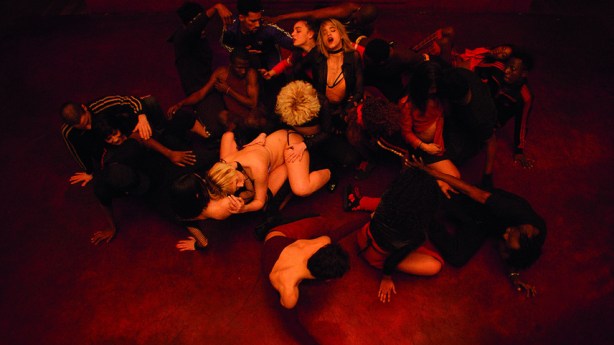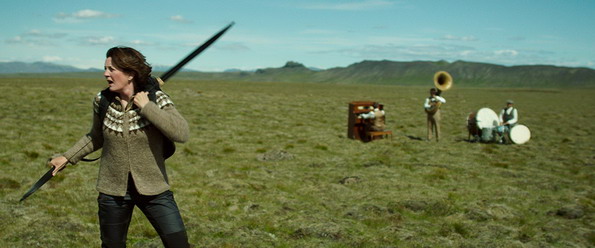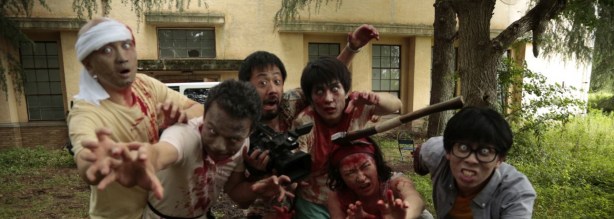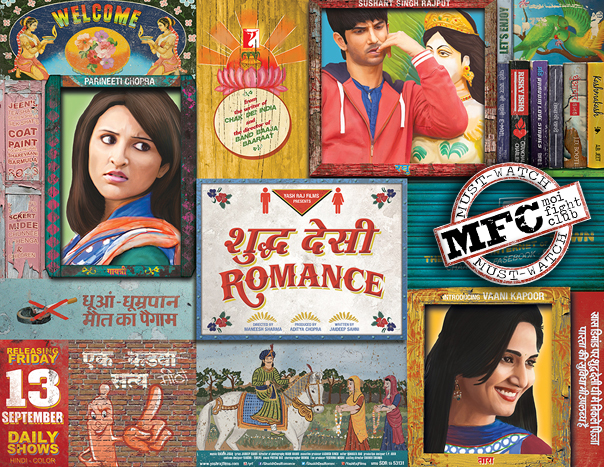Roma
Alfonso Cuaron’s latest will be discussed for weeks after release, for it’s ability to create conversations about family, employment, womanhood, relationships, ethnicity, culture, revolutions, politics, and, even dog poop. Roma will certainly develop religious followers across a period of time, especially because of it’s shot like an epic period drama but in fellini style, although not as surreal as the latter -Thanks for bringing fellini back. Cuaron’s latest is definitely his best work, although one can always argue otherwise.
Roma, being Cuaron’s semi autobiographical work takes us through the lives of two women who raised him, the young domestic worker, Cleo; and the mother of four, Sofia. Both these women have been abandoned by men, sketching out to grow into flawed, strong, and memorable characters. The narrative then follows Cleo’s journey into an unexpected pregnancy, and Sofia’s journey after her husband absconds away in the name of work.

Roma starts with a scene of the floor being cleaned, and ends up at the sky. This film puts Alfonso Cuaron right up there with the likes of Fellini, Satyajit Ray, and Truffaut, who have made such epic semi autobiographical work from their childhood memories. Some of the sweeping pan shots of 360 degree need to be watched to believe, they look gorgeous on the big screen -why is this a Netflix film! Also, another achievement on the film would be the immersive sound design which takes you right into Mexico.
It would be criminal to not mention the breathtaking scene towards the end at a family holiday on the beach. The scene of Cleo and the kids in the sea is one of the best monochromatic scenes ever seen. This dripping with love, water, and, dog-poop poetry by Cuaron on his childhood memories and the women who shaped him is a must watch, his work is more empathetic than the people he is compared with earlier in this write up.
Climax
Climax can easily be said to be Gasper Noe’s comeback. If not for the hype, I would’ve easily resisted watching another film by Gasper Noe, a filmmaker who has which always relied upon sensationalism, provocativeness, and intensely shocking narratives and visuals. His latest is more shocking and more deranged, but this time, his antics work in the favour of the story.
A troupe of young dancers have gathered in an old school building’s empty rehearsal hall for a party, which hits high notes of dance in the beginning but ends up hitting horrifying notes of a bad acid trip, which at some points you wish would get over earlier. Such is the horrifying portrayal of a young dance troupe’s party which quickly goes downhill.

Noe’s comeback is innovative in its fixation of treating this as a dance film, even when people are dying of drug overdose. This is a break from Noe’s sexual obsession and stays true to his vision, the camera work accompanies the dance styles sequences as the camera flips and sweeps at so many occasions, as if the camera is also dancing on acid with the troupe. The visuals are so mesmerising that you end up sincerely watching even the horrifying ones towards the latter half. Gasper Noe is an important filmmaker because he gives us a break from the usual cinematic diet, providing visceral, stunning, and bold images of a young dance group, mostly women suffering from a bad trip of LSD. A strong mention for the kickass innovation, Gasper Noe has done with the credit sequences, randomly popping up in the film.
Woman at War
Weapons, check! Strategy, check! And of course a live band to accompany the warrior, check! This surreal Icelandic film, although conventional, has much to offer and enjoy. This political-musical-comedy is a terrific watch, where some dry Icelandic humour and absurd characters, spice up the otherwise conventional tale.
Halla, a middle aged choir director, has a secret mission, to bring down the heavy industrialisation in Iceland, using nothing but a bow and an arrow. Alongside, she has even written a new manifesto which is sent flying across the town as leaflets, found an accomplice in her long lost cousin, and, has gotten her application to adopt a girl child accepted in Ukraine. One cannot resist to stand by Halla’s strong resilience, whose living room has posters of Gandhi and Mandela.

This local Icelandic Robin Hood’s character is fleshed out extremely well, allowing the viewer to accompany her in this tough adventure, amidst stunning locations of Iceland, which are magically shot in the film, allowing the rural and rustic Iceland to grow into it’s own character for the film. The vibrantly offbeat mood of the narrative is accompanied brilliantly with the live band playing some eclectic music to support Halla. The weirdly placed jokes (deadpan humour style), like the one on Vikings, are sure to leave you in splits.
Touch Me Not
Romanian film ‘Touch Me Not’ raises questions about body, sexuality, and intimacy, in the most dishonest and non-intimate manner. This film has admirers who have awarded it the Golden Bear at Berlin, however, failed to raise any interest for me. The film manages to blend fiction with reality seamlessly, but ends up exploring more themes than it can handle. The strange relationship humans have with their bodies could have been a strong subject, this however is a huge missed opportunity.
Laura Benson is Laura, who appears in dialogue scenes with the director, discussing her issues with voyeurism. Christian Bayerlein is a man with spinal muscular dystrophy who wants to challenge body-image preconceptions. Tomas Lemarquis is looking at comparable ideas. It is all heading towards the sex club. The scenes featuring Christian, narrating his perception about beauty and touch are some of the only watchable parts of the film. The rest of the affair is extremely naive, petty, and radical to an extent that it can be an attempt of narcissistic filmmaking.






















